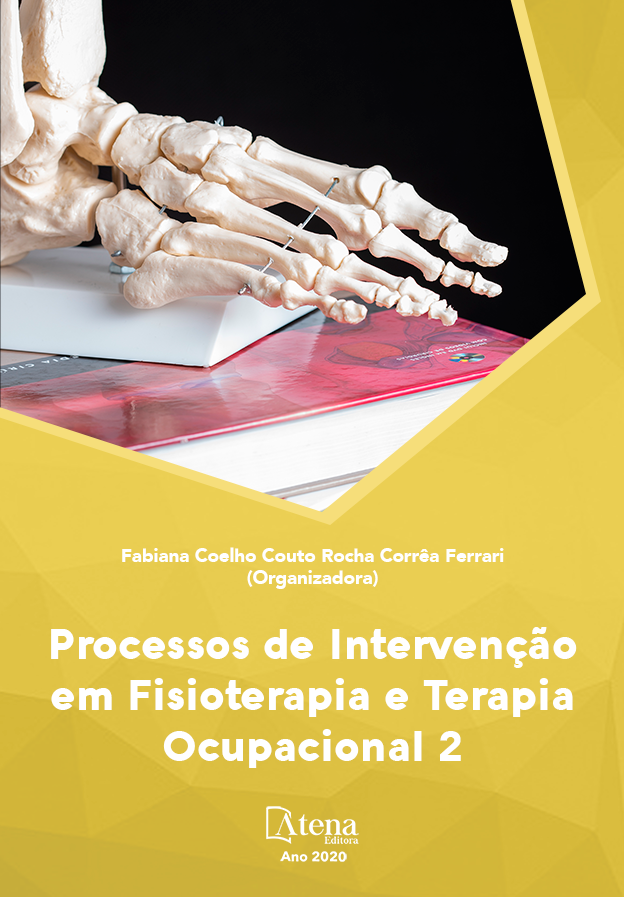
EFEITO DO TREINAMENTO FISICO NO TRATAMENTO DE PACIENTES COM ASMA: REVISÃO BIBLIOGRÁFICA
INTRODUÇÃO: A asma é uma doença inflamatória crônica das vias aéreas cujo diagnóstico é clínico e o tratamento visa principalmente controlar os sintomas e diminuir os riscos de exacerbação. Mesmo sobre tratamento clínico-medicamentoso adequado, os pacientes nem sempre atingem o controle clínico adequado. Por isso, recomenda-se o uso de terapias não farmacológicas, destacando-se o exercício físico (EF), que é, atualmente, reconhecido como parte fundamental do programa de reabilitação. MATERIAIS E MÉTODOS: A revisão que se segue objetivou explorar os aspectos relacionados à melhora do controle clínico da doença induzidos pelo EF em pacientes asmáticos. Para tanto, foram revisados artigos publicados na base de dados Pubmed, Medline e SciELO de 2015 a 2019. RESULTADOS: Verificou-se que os primeiros estudos sugeririam que o EF, predominantemente aeróbio, melhora o condicionamento físico, dispneia e a percepção de falta de ar. Essa tendência foi mantida até os anos atuais e a partir de então surgiram estudos com maior rigor metodológico mostrando que o treinamento físico pode reduzir o broncoespasmo induzido pelo exercício, a responsividade brônquica bem como e a capacidade física aeróbia. DISCUSSÃO: Evidências mostrando que o EF melhora os fatores de saúde relacionados à qualidade de vida biopsicossocial, o controle clínico da asma e a inflamação pulmonar passaram a ser mais bem investigados. Atualmente, considera-se a prática de EF como um componente fundamental no programa de tratamento para pacientes com asma moderada e grave, quando realizado com predominância aeróbia, em intensidade de baixa a moderada e feito pelo menos duas vezes por semana. CONCLUSÃO: Portanto, o treinamento físico potencializa o controle clínico da asma através da melhora do condicionamento físico biopsicossocial, sendo importante sua indicação na prática clínica principalmente para os pacientes que estão em tratamento clínico-medicamentoso, seja ela criança, adulto jovem ou idoso.
EFEITO DO TREINAMENTO FISICO NO TRATAMENTO DE PACIENTES COM ASMA: REVISÃO BIBLIOGRÁFICA
-
DOI: 10.22533/at.ed.4472007126
-
Palavras-chave: modalidades de fisioterapia, asma, qualidade de vida
-
Keywords: physical therapy modalities, asthma, quality of life
-
Abstract:
INTRODUCTION: Asthma is a chronic inflammatory disease of the airways whose diagnosis is clinical, and the treatment is mainly aimed at controlling symptoms and reducing the risk of exacerbation. Even under appropriate clinical-drug treatment, patients do not always achieve adequate clinical control. Therefore, the use of non-pharmacological therapies is recommended, with emphasis on physical exercise (PE), which is currently recognized as a fundamental part of the rehabilitation program. MATERIALS AND METHODS: The following review aimed to explore the aspects related to the improvement of the clinical control of the disease induced by PE in asthmatic patients. To this end, articles published in the Pubmed, Medline and SciELO database from 2015 to 2019 were reviewed. RESULTS: It was found that the first studies would suggest that PE, predominantly aerobic, improves physical fitness, dyspnea and the perception of lack of air. This trend has been maintained until the present years and since then studies with greater methodological rigor have emerged showing that physical training can reduce bronchospasm induced by exercise, bronchial responsiveness as well as and aerobic physical capacity. DISCUSSION: Evidence showing that PE improves health factors related to biopsychosocial quality of life, clinical control of asthma and pulmonary inflammation have been further investigated. Currently, PE practice is considered a fundamental component in the treatment program for patients with moderate and severe asthma, when performed with aerobic predominance, in low to moderate intensity and done at least twice a week. CONCLUSION: Therefore, physical training enhances the clinical control of asthma through the improvement of biopsychosocial physical conditioning, and its indication in clinical practice is important, especially for patients who are undergoing clinical drug treatment, whether they are children, young adults or the elderly.
-
Número de páginas: 7
- Emanuelle Paiva de Vasconcelos Dantas
- THAÍS NOBERTA DE OLIVEIRA
- GERDANE DA CONCEIÇÃO SOUSA
- BRUNA DA SILVA MATOS
- MYLENA RODRIGUES GONÇALVES
- LUANNA GABRYELLE ALVES DE SOUSA
- TIAGO SANTOS DE OLIVEIRA
- JULYANNA APARECIDA SARAIVA
- NEIVALDO RAMOS DA SILVA
- Kananda Jorge Pereira
- Laylla Mickaelle de Sousa Ferreira


